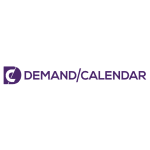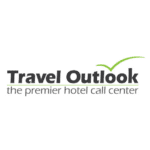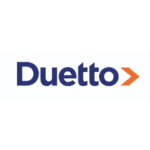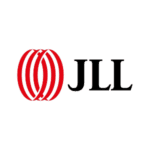 Imagine a busy hotel lobby with every room occupied and a constant revenue stream. You may believe your revenue management team has done an excellent job, but it’s possible that you’re unintentionally missing out on a significant amount of money. This may sound unbelievable, but it’s a harsh reality for numerous executives in the hospitality industry who only focus on top-line revenue and fail to recognize the untapped profits that are slipping away.
Imagine a busy hotel lobby with every room occupied and a constant revenue stream. You may believe your revenue management team has done an excellent job, but it’s possible that you’re unintentionally missing out on a significant amount of money. This may sound unbelievable, but it’s a harsh reality for numerous executives in the hospitality industry who only focus on top-line revenue and fail to recognize the untapped profits that are slipping away.
While comforting in its familiarity, traditional revenue management is akin to focusing on the tip of the iceberg, ignoring the vast potential lurking beneath the surface. It’s time to dive deeper beyond the allure of high occupancy rates and RevPAR. Instead, it’s time to pivot our attention to the often overlooked yet critical factor: Contribution.
By shifting the focus to the contribution, which is the revenue minus the cost of customer acquisition cost (CAC), hotel executives can achieve a higher level of profitability and efficiency. This approach was previously considered unattainable with a top-line-focused strategy. What’s more, the profits you could gain are not just significant but also have the potential to be genuinely transformative.
Let’s delve into why contribution-focused management is more than just the future. It’s the ‘now’ of the hospitality industry and why sticking to the old school of thought could cost you more than you think. First, we examine how revenue management has evolved and future trends. Is your revenue manager still stuck in the 1980ties, or did you invest in developing the revenue management team, tools, and technology to capture more profit?
The evolution of revenue management
The evolution of revenue management in the hotel industry has largely mirrored the broader changes in technology, data analysis, and customer expectations.
Pre-1980s: Traditional Management – As a formal discipline, revenue management didn’t exist in the hotel industry before the 1980s. Hotels typically set fixed rates for rooms and adjust them only occasionally, usually based on seasonality and local events. There was little use of data analysis or customer segmentation.
The 1980s: The Birth of Revenue Management – The concept of revenue management was introduced to the hotel industry in the 1980s, primarily influenced by the airline industry. American Airlines pioneered yield management to maximize flight revenue, and hoteliers saw a similar opportunity. The idea was to sell the right room to the right customer at the right time for the right price. Early revenue management focused on managing room rates and occupancy to maximize revenue per available room (RevPAR)
The 1990s-2000s: Technology and Data – With the rise of technology and the internet, gathering and analyzing large amounts of data became feasible. Hotels started using software to help with revenue management decisions. This software helped track booking patterns, customer segmentation, and demand forecasting. Online travel agents (OTAs) like Expedia and Booking.com emerged during this period, providing a new distribution channel and increasing price transparency.
The 2010s: Big Data and Personalization – Big data analytics became crucial in revenue management as technology advanced. Hotels began to collect and analyze vast amounts of customer data to create detailed customer profiles. This allowed for more granular segmentation and personalized pricing. Revenue management systems also began incorporating real-time data and looking beyond rooms to optimize pricing for other hotel services.
The 2020s: Artificial Intelligence and Machine Learning – The latest revenue management evolution involves using AI and machine learning to automate and improve decision-making. These technologies can analyze vast amounts of data, recognize patterns, and make accurate forecasts beyond human capabilities. For example, AI-powered systems can dynamically adjust room rates in real-time based on various factors, including demand, competition, customer behavior, and even weather forecasts.
Future Trends – We can expect to see more sophisticated use of AI, including predictive analytics, to anticipate customer behavior and preferences. We’ll also likely see an increased focus on total revenue management, which looks beyond just rooms to optimize revenue from all hotel services, such as restaurants, spas, conferences, etc. Additionally, we may see more integration between revenue management and other hotel systems, like customer relationship management (CRM) and property management systems (PMS), to create a more holistic approach to revenue optimization.
It’s also important to note that revenue management strategies must adapt to changing consumer behaviors and expectations, as well as shifts in the broader market environment, such as the impact of the COVID-19 pandemic on global travel.
Most hotel companies by now have a shattered number of siloed systems in place that is supposed to give revenue management the tools they need. However, the focus is still to grow top-line without considering the cost of growing the top-line. Here are some benefits when moving from a top-line focus to a contribution focus.
Why change – What’s in it for top management?
Top management must initiate and support the shift to a profit-oriented approach. To make decisions to change the way things are, you need to see the benefits.
- Profitability: The most direct benefit of this shift is increased profitability. By focusing not just on revenue but particularly on the cost of customer acquisition, hotels can boost their bottom line. While increasing revenue is necessary, the profit ultimately keeps a business sustainable in the long run.
- Competitive Advantage: Focusing on contribution margin can provide a competitive edge in a highly competitive industry like hospitality. By understanding and managing CAC, hotels can optimize their marketing and distribution strategies to attract customers more cost-effectively than their competitors.
- Improved Decision Making: A profit-oriented approach provides a more comprehensive business view, leading to better informed strategic decisions. For instance, understanding the profitability of different customer segments or distribution channels can guide decisions about where to invest marketing resources or how to price rooms.
- Long-Term Sustainability: A focus on contribution margin can help ensure the long-term sustainability of the hotel. It promotes more efficient use of resources and encourages a culture of cost management, which can help the hotel weather downturns in the market or other challenges.
- Stakeholder Value: A focus on profit can increase shareholder value for publicly traded companies or those with external investors. Investors are interested in more than just revenue; they want to see that a business is profitable and provides a good return on investment.
- Operational Efficiency: This approach encourages reviewing processes and systems across the organization, leading to operational efficiencies. It can drive innovation and improvements in everything from customer service to procurement.
- Employee Motivation: Shifting the focus to contribution can also positively impact employee motivation and performance. By aligning KPIs with profitability, employees see a direct connection between their work and the hotel’s financial success.
The action plan
- Education and Training: The first step is to educate revenue managers about the importance of considering CAC and its impact on profitability. This can involve formal training sessions, seminars, workshops, or self-guided learning. The goal is to help them understand that while maximizing revenue is essential, minimizing costs to improve overall profitability is equally crucial.
- Tools and Technology: A shift to a profit-oriented approach requires the right tools and technology. This includes advanced revenue management systems tracking revenue and monitoring costs, particularly CAC. In addition, these systems should integrate with other hotel systems (like CRM, PMS, and distribution channels) to provide a comprehensive picture of revenue and costs.
- Data Analytics: To effectively manage CAC, revenue managers must understand where customers come from and the most cost-effective channels. This requires a strong grasp of data analytics and the ability to interpret and act on this data. Skills in this area can be developed through training and practice.
- Shift in KPIs: To reinforce this shift in approach, hotels should change the key performance indicators (KPIs) they use to evaluate their revenue managers. For example, they should include profitability metrics considering CAC instead of focusing solely on revenue metrics like RevPAR.
- Collaboration: Profit-oriented revenue management requires closer collaboration with other departments, particularly marketing and sales. These departments often play a significant role in customer acquisition and can provide valuable insights into CAC. Regular meetings and open lines of communication can help foster this collaboration.
- Top-Down Support: For this shift to be successful, it must be supported from the top. The hotel’s senior management must buy into this new approach and provide the necessary resources and support. This can involve setting clear expectations, providing the essential tools and training, and creating a culture that values profitability and cost management.
- Experimentation and Continuous Improvement: The shift to a profit-oriented approach is not a one-time event but a continuous learning and improvement process. Revenue managers should be encouraged to experiment with different strategies, measure the results, and refine their approach based on their learning.
















